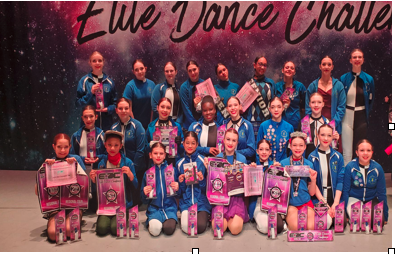
Have you ever wondered about the difference between a recreational dancer and a competitive dancer? It’s an interesting topic filled with distinct differences that might surprise you. Hopefully, after reading this, you will have a better understanding of the two so you can choose which type of dancer your child is.
What is a Recreational Dancer?
Recreational dancers are dancers who dance for the sheer fun and creative aspect of it. They focus less on form and technique and dance more on the joyous experience they feel from dancing. Now, that’s not to say they don’t learn proper form and technique; it just means it’s not as intense. Their primary goal is not to impress a panel of judges and win trophies. It’s about stepping into a world where they can express their emotions freely. They just want to learn to dance, interpret music through movement, and dance with abandon. Recreational dancers perform in a recital at the end of the year. They will most likely have a costume for each style they dance in.

What is a Competitive Dancer?
Like recreational dancers, competitive dancers also dance for the fun and joy of it but their passion for dance goes beyond joy. They treat dance as not just an art but a sport. They are athletes who strive to perfect, maintain, and improve their technique, balance, skills, strength, flexibility, and mind. Their training is rigorous . They often train 15-25 hours a week. This is time spent taking required classes, rehearsals, and private lessons. They work tirelessly to polish and perfect their routines. They pay close attention to every detail. A competitive dancer's goal is to deliver a flawless performance that captivates the audience and impresses the judges. Competitive dancers thrive on the challenge of pushing their physical and artistic boundaries. A competitive dancer can showcase their talent and hard work at competitions and events where they are judged on their performance. Competitive dancers will compete as a group, trio, duet, and soloist. Dancers will compete at a regional competition from ages 5-18. After competing regionally, qualifying routines go to compete nationally towards the end of their season. Dance competition season typically starts in January and ends in July or August. During off-season dancers prepare for the upcoming competition season.
To be a competitive dancer, you have to audition for the team. Competitive dancers represent the dance studio, which means they have requirements that recreational dancers don’t, such as the number of hours they dance weekly, training camps/workshops, master classes, uniform team jacket apparel, hair pulled back and neat. Each studio has its own set of rules for team members, so make sure you read through your studio’s handbook.
In summary, while both recreational and competitive dancers share the love for dance, Their approach and goals to training are profoundly different. A recreational dancer dances mainly for the pure joy of it and less emphasis on form and technique.Their training is more laid back and their goals are focused on the pleasure they get from expressing themselves through movement and music. However, a competitive dancer treats dance as an artistic expression and a sport. They dedicate a specific amount of time on training to perfect their technique and performance. Their training is intense, their goals are ambitious with an intent to impress and excel in dance competitions. Whichever dancer you choose to be, just know both recreational and competitive dancers are equally beautiful! They both celebrate movement and artistic expression set to music. Each one brings joy, challenges, and rewards.
Follow Juannette’s Dance Mom Journey: https://youtube.com/@juanette92571?feature=shared
Center for Performing Arts Website: https://dancestudioma.com/
Email: Info@dancestudioma.com
Phone: 978-258-4547
YouTube: @centerforperformingartsdan566
https://www.youtube.com/@centerforperformingartsdan566/videos
Instagram: @dancestudiocpam
Facebook: Log in or sign up to view



